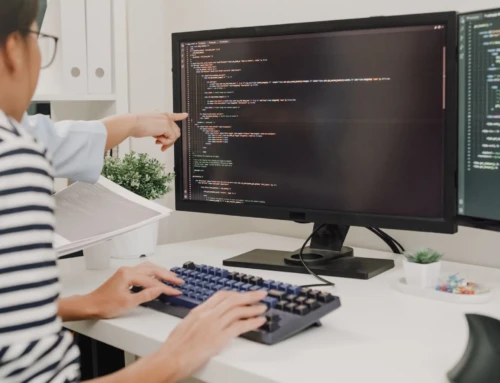NFTs are upending the traditional art market by fostering new collector communities and providing artists with greater access to their fans and buyers.
Artists, collectors, galleries, museums, and auction houses are all interested in the ramifications of buying and selling. In the past several years, NFTs, or non-fungible tokens, have captivated the imaginations of artists and collectors worldwide, stimulating new economic activity. However, little attention has been paid to how NFTs alter the traditional art market.
NFTs are a new crypto asset; however, unlike Bitcoin, which is fungible or interchangeable, NFTs are distinct. An NFT is a unique digital depiction of a product, such as a piece of art, in the context of art and collectibles. It is analogous to a certificate of authenticity and is recorded on a blockchain, a digital database that serves as a decentralized public ledger. NFTs may be based on actual or digital works of art, music, collectibles, and other digital assets. Consequently, how do NFTs fit into the current art market landscape? Some may consider NFTs a passing trend, yet they have intriguing implications for present art and the digital art world’s future.
Players and Revenues
When it comes to the world of art, art galleries and auction houses have long been the hubs of the art market. For decades, artists and their artwork have followed a well-trodden path, beginning with galleries, which placed the art with museums and collectors, and then moving on to the secondary market, which is based on auction houses. This procedure is disrupted by NFTs and associated marketplaces, which enable more artists to go directly to market and sell to purchasers.
NFTs also upset artwork pricing and gallery and artist compensation. As art is initially created and sold, the gallerist typically determines the price of works by new and emerging artists. Then, over time, a secondary market may develop for a seasoned and mature artist’s work, increasing its liquidity. Following the conventional paradigm, the proceeds are distributed to the then-current owner each time an artwork is sold on the secondary market. Thus, the artist does not benefit from subsequent price increases after the initial sale. NFTs affect this.
NFT contracts may contain stipulations that pay artists a royalty on each subsequent transaction, allowing them to share in any possible profits. Large NFT exchanges, such as OpenSea, honor these terms, although private purchases between individuals are more of a murky area. Given the possibility of a collapse of primary and secondary markets and the fact that NFTs are freely issued and tradable, it is conceivable that buyers have a more substantial influence on market pricing.
This democratization of the art market signifies that more buyers and sellers from within and beyond the traditional art world are trading across different and diverse platforms; therefore, it is more necessary than ever to be cautious and well-informed before engaging.
Accessibility and Availability
NFTs and blockchain are already altering how people view art and art ownership. NFTs often reference a tangible or digital piece of artwork. However, purchasing an ETF does not imply ownership of the physical work of art. Sometimes NFTs are sold with physical skill, and sometimes they are not.
NFTs may usher in a new breed of art patron. Even if ownership of art through art funds is not novel, blockchain expands these capabilities by making fractionalized art ownership more prevalent and easier to buy and sell. Traditional art funds provide each investor with a proportional stake in a portfolio of artwork in exchange for a more significant initial investment. Blockchain facilitates fractional ownership of one or more works of art, allowing them to be freely traded on the secondary market for a lower minimum investment.
Communities and Collectibles
NFTs affect more than just great art. Collectibles, such as baseball cards or sentimental items, lend themselves well to producing non-fungible tokens. In this regard, NBA Top Shots is an early example of an NFT that allows fans to collect highlight films of their favorite basketball players dunking or shooting a jump shot. A unique profile picture, online game content, or sporting clips could result.
This category of non-fungible tokens may also draw value from a vast community of admirers or collectors who reinforce one another’s preferences. In effect, NFTs are forming new art communities and providing artists with new, more direct means of interacting with their patrons. As of 2021, Yuga Labs’ Bored Ape Yacht Club, a collection of NFTs depicting cartoon apes, has raised millions of dollars in the art and business and counts celebrities among its backers. The “Club” grants members access to unique chat rooms and offers “airdropped” (new NFTs transferred directly to a user’s wallet), and the ape photos serve as digital crests for social media profiles. Historically, art galleries have fostered the development of art communities; today, NFTs also facilitate the expansion of virtual and online communities.
Knowledge is Acquired, and Experience is Acquired
As with any new market or product, discretion and caution are necessary. The art market is unregulated. Thus certain parties may attempt to profit at the expense of others. In addition, with the increasing emergence of rival platforms, it is prudent to evaluate the constraints of siloed systems, currencies, and products. A specialist or attorney in the art can assist with price and legal difficulties.
NFTs may be destroying the art industry, but in this new era of digital assets, the economics of taste and passion purchases are thriving. Similar to the traditional art market, new collectors reinforce the values and preferences for artists, pictures, and communities.
New York Software Developers isn’t simply interested in NFT development; we’ve built hundreds of blockchain projects and have a track record of generating profitable NFT businesses.
Our programmers are experts in the field of NFT.




